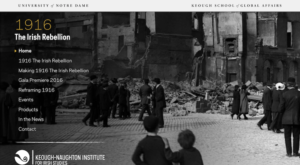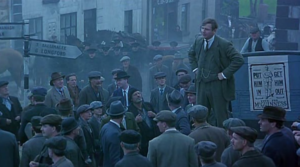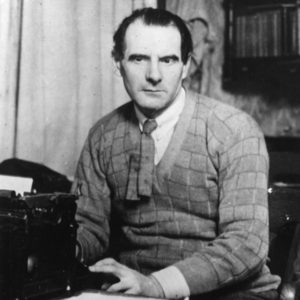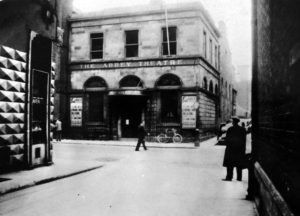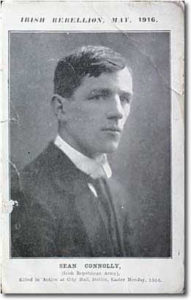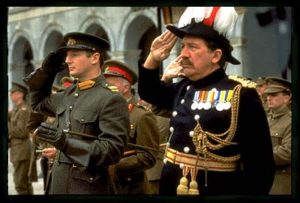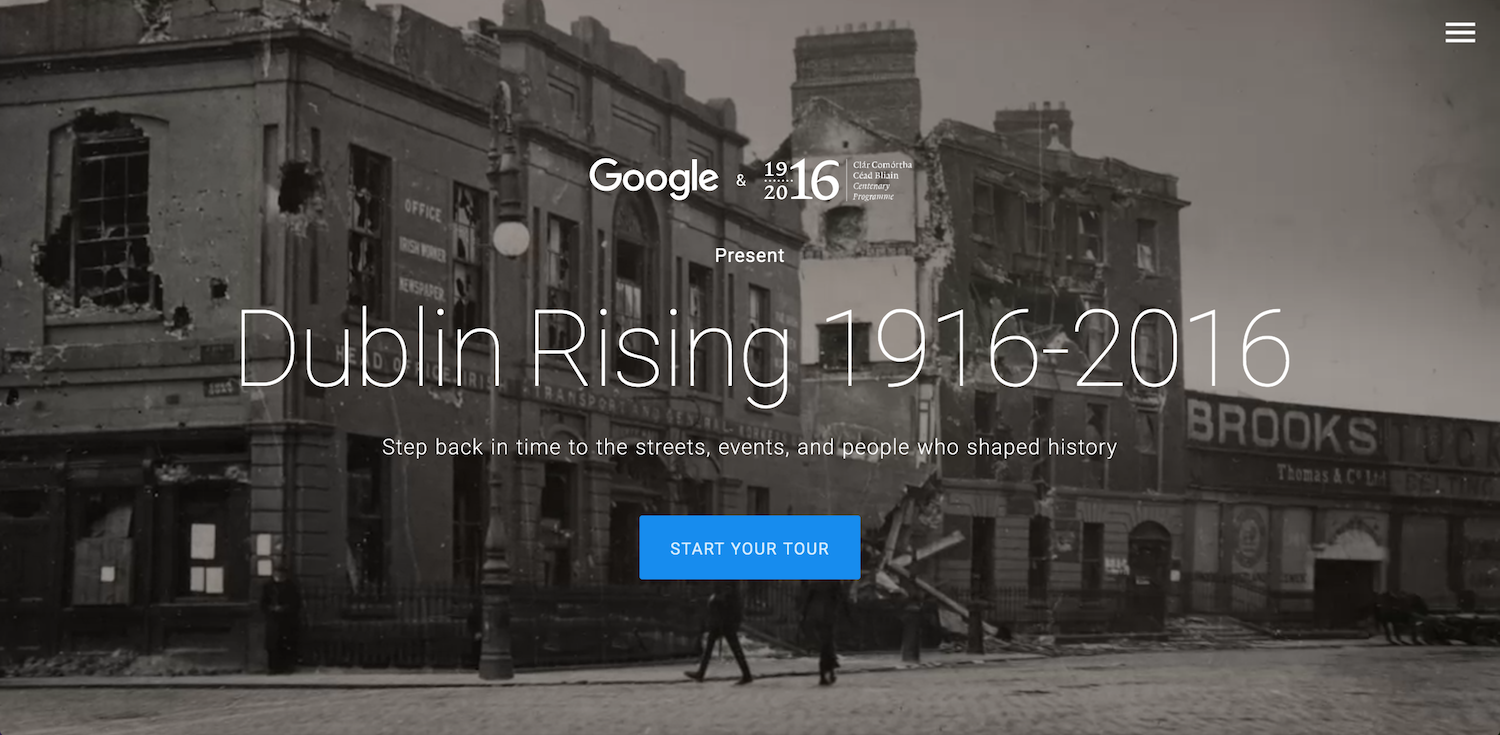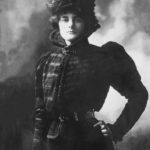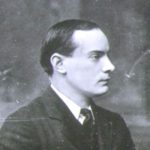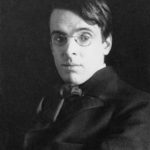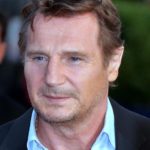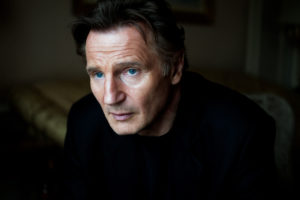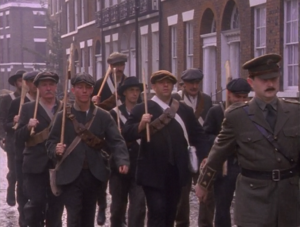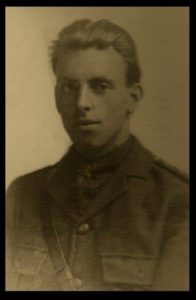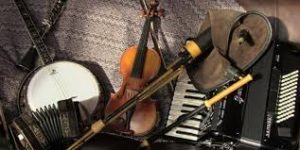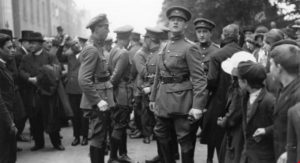The 1916 Rising created a huge shift in Ireland’s history; it caused a divide between Ireland’s nationalists and an even further disparity between the North and the South. But more importantly, men and women took to the streets and sacrificed their lives to stand for their independence from England. Looking beyond those who directly influenced the politics of the rising—Pearse, de Valera, Clarke—we looked at the famed people alive at the time: W.B. Yeats, Sean Connolly, Maud Gonne, Sean O’Casey, and musicians. As a poet, Yeats wrote about the independence of Ireland and was published in the newspapers making his words all the more accessible. Yeats was a kind of celebrity, one who influenced the Irish people through words and language. Sean Connolly was an actor at the Abbey Theatre, a different sort of celebrity, and lead a march from the theatre to the GPO to fight during the Rising. The early 20th century was no exception to the rule: celebrities used their voice to speak for the masses and to the masses.
Celebrities during the early 20th century were undoubtedly different from the celebrities today; those who were famous were generally intellectuals and artists. In fact, the word celebrity was least used during the early 1900s:

Media about the famed was usually spread by word of mouth, or newspaper articles. They were actors, actresses, poets, politicians, singers, and writers. With the arrival of mass media, film and TV forever changed how people became famous. In previous centuries people could only become famous by doing something that was remembered ages later; Julius Ceasar conquered countries, Plato was a great thinker. In the 20th century, mass media allowed for people to become world famous rapidly and without doing anything (think Kardashians).
Today, actors are on talk shows, politicians on live debates, and celebrities get together to make a (likely) progressive video of their shared opinions that goes viral online. The famous undoubtedly have a hand in shaping how we approach the world; whether it is to sway our vote in an election, or to rally us around a common cause, those with a voice that can be heard speak for the masses.
The celebrities in this project are observed from the 1916 lens of being intellectually famous and famous on the stage, while celebrities from the 21st century are mostly famous actors and singers with a clear media influence.
In Ireland, those who spoke up represented the nation, and that continues to be the case today. Those chosen to be representative of Ireland—Liam Neeson, Collin Farrel, Bono—become associated with what constitutes Irishness. Irish identity has long been a complicated topic, one that is enmeshed and conflated with nationality, and now celebrities further that identity question. With geography, identity, citizenship, and fame considered, what constitutes national Irish identity is further complicated.
So what greater role do these factors and celebrities play, then, in the shaping of historical memory? That is what we set out to investigate in this project.
A century later, in 2016, Ireland is commemorating the fateful events of 1916. Commemorations for the rising are extensive, listed extensively on ireland.ie, and many promotional videos surrounding the events have involved Irish celebrities. Such historical occurrences as the Rising have infiltrated music, film, documentaries, and thus the historical memory surrounding the event.
In our investigation of celebrity involvement, we moved from a historical lens to a more contemporary one. Our political climate in America has invoked a great deal of celebrity endorsements for certain presidential candidates, and other celebrities—like the cast of Hamilton—has been taking direct action to speak out against injustices. Just as Sean Connolly marched from the stage to the GPO, celebrities like Liam Neeson lead the commemorations of 1916.
On our site, you’ll be able to navigate through the “1916: The Irish Rebellion” documentary headed by the Irish Studies team at Notre Dame here in the United States. Narrated by Liam Neeson, he was one of the most prominent celebrities to step forward during these commemorative celebrations. Next, look at how else Liam Neeson has been promoting the remembrance of the Rising by his acting as Michael Collins or how Sinead O’Connor’s music is featured in the film.
Read about the Young Indiana Jones series that approaches the 1916 Rising as it occurs. Read of The Abbey Theatre’s involvement and how W.B. Yeats influenced thousands of readers with his words.
From Collin Farrell’s narration of a guided Rising tour through Dublin, to Dominic West reading The Second Coming, celebrities were used widely during these commemorative events to involve a greater audience than historians are capable of reaching on their own.
Watch celebrities read Yeats poetry in honor of the Rising here:
and now explore our page:
